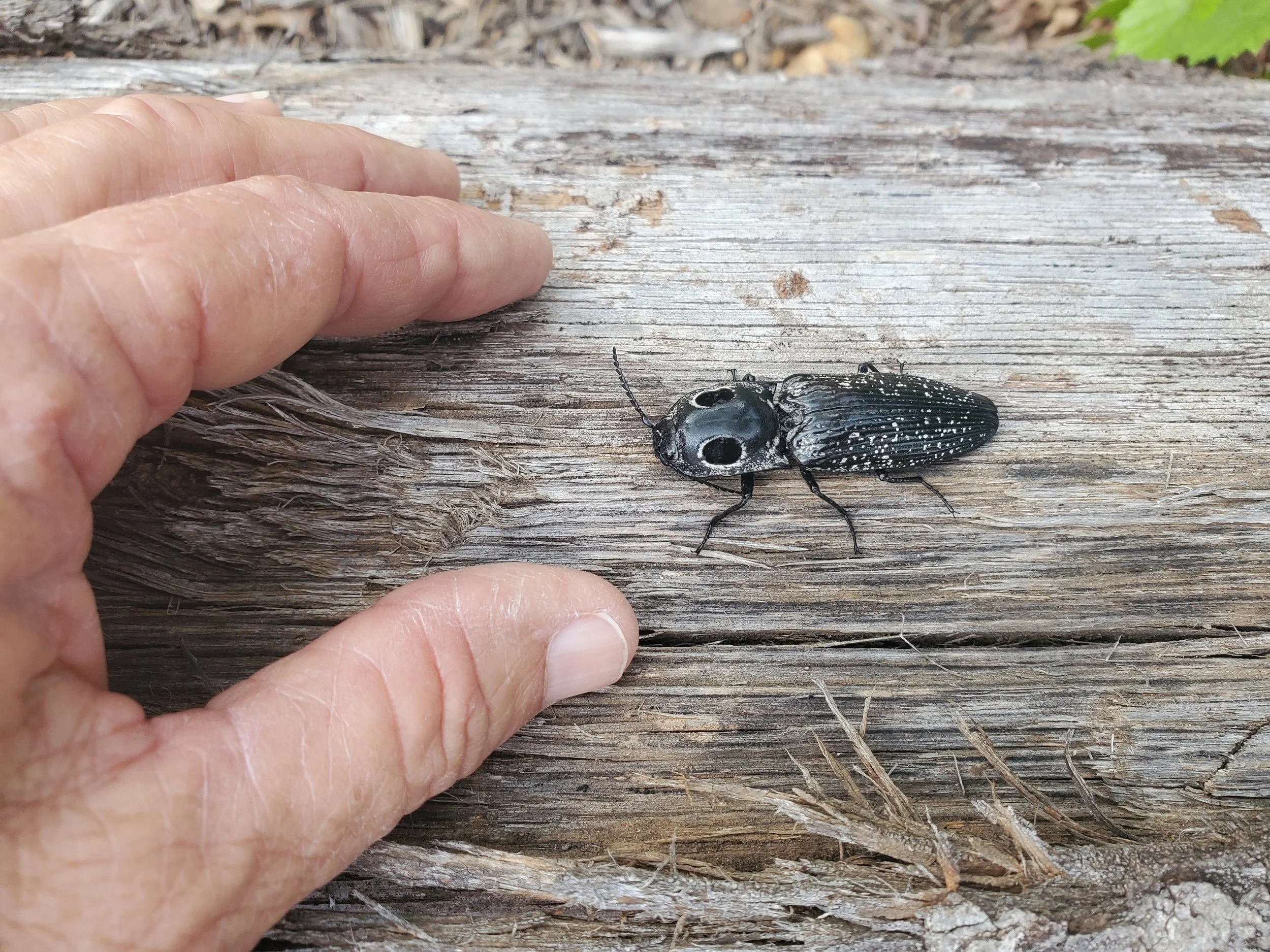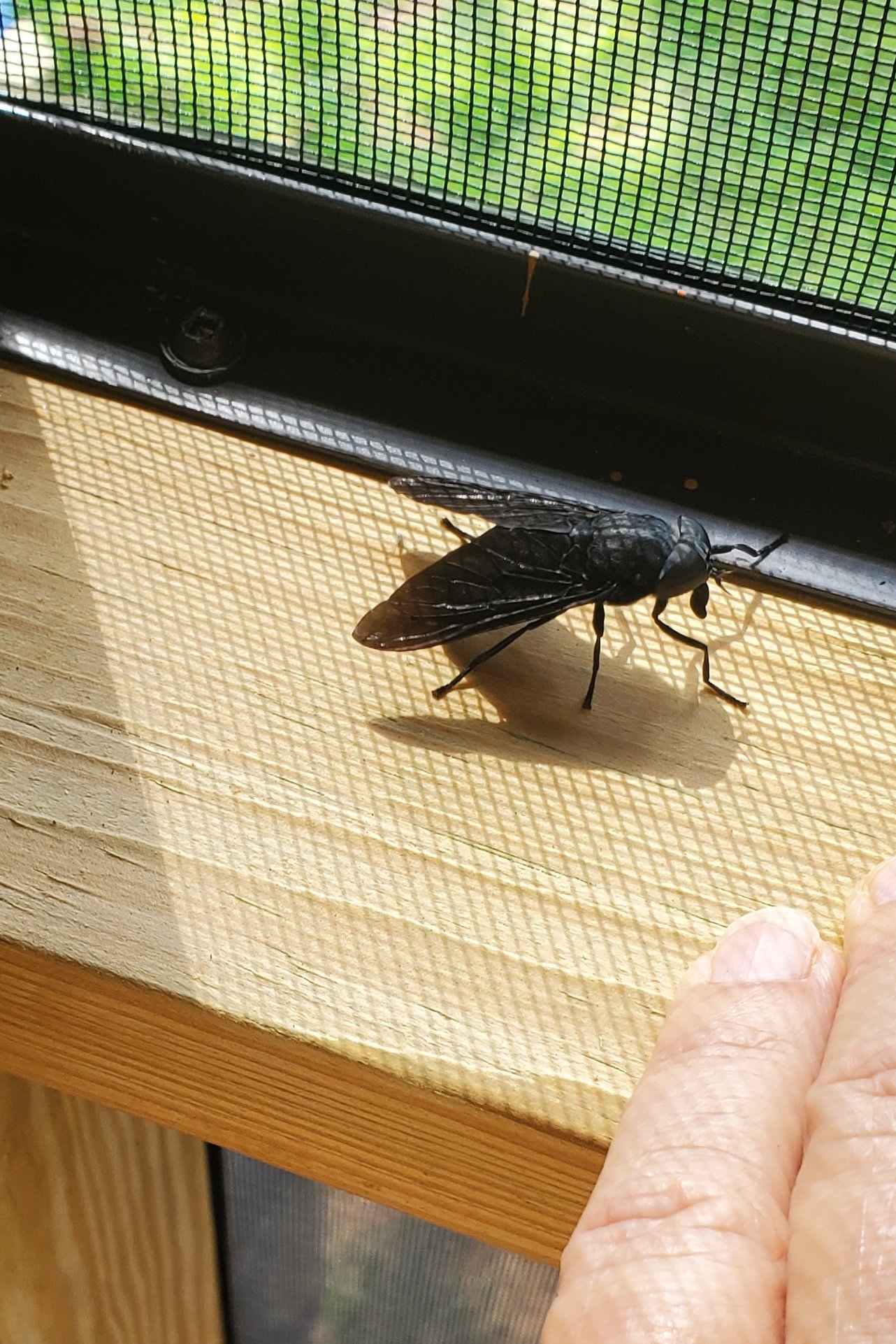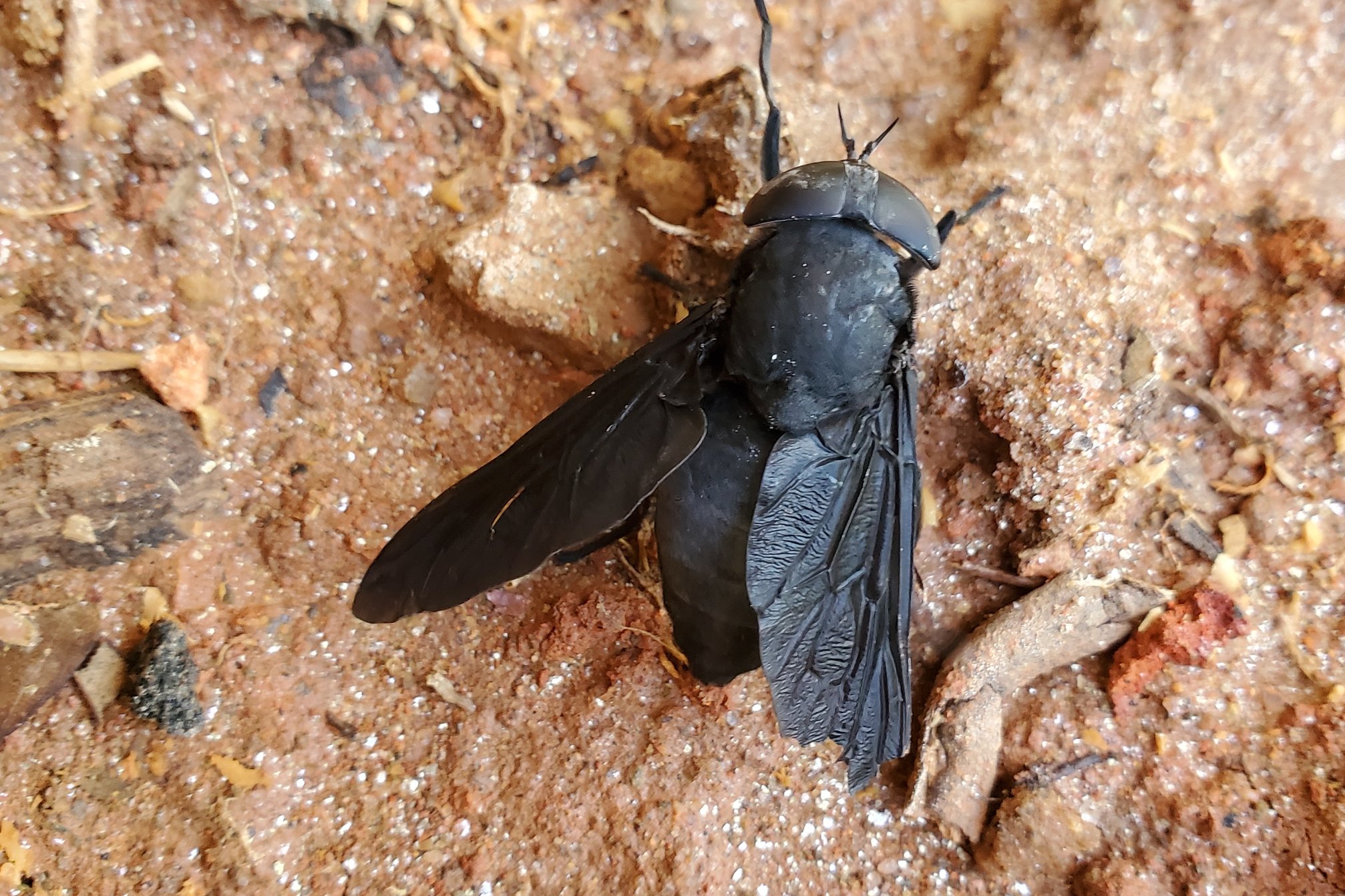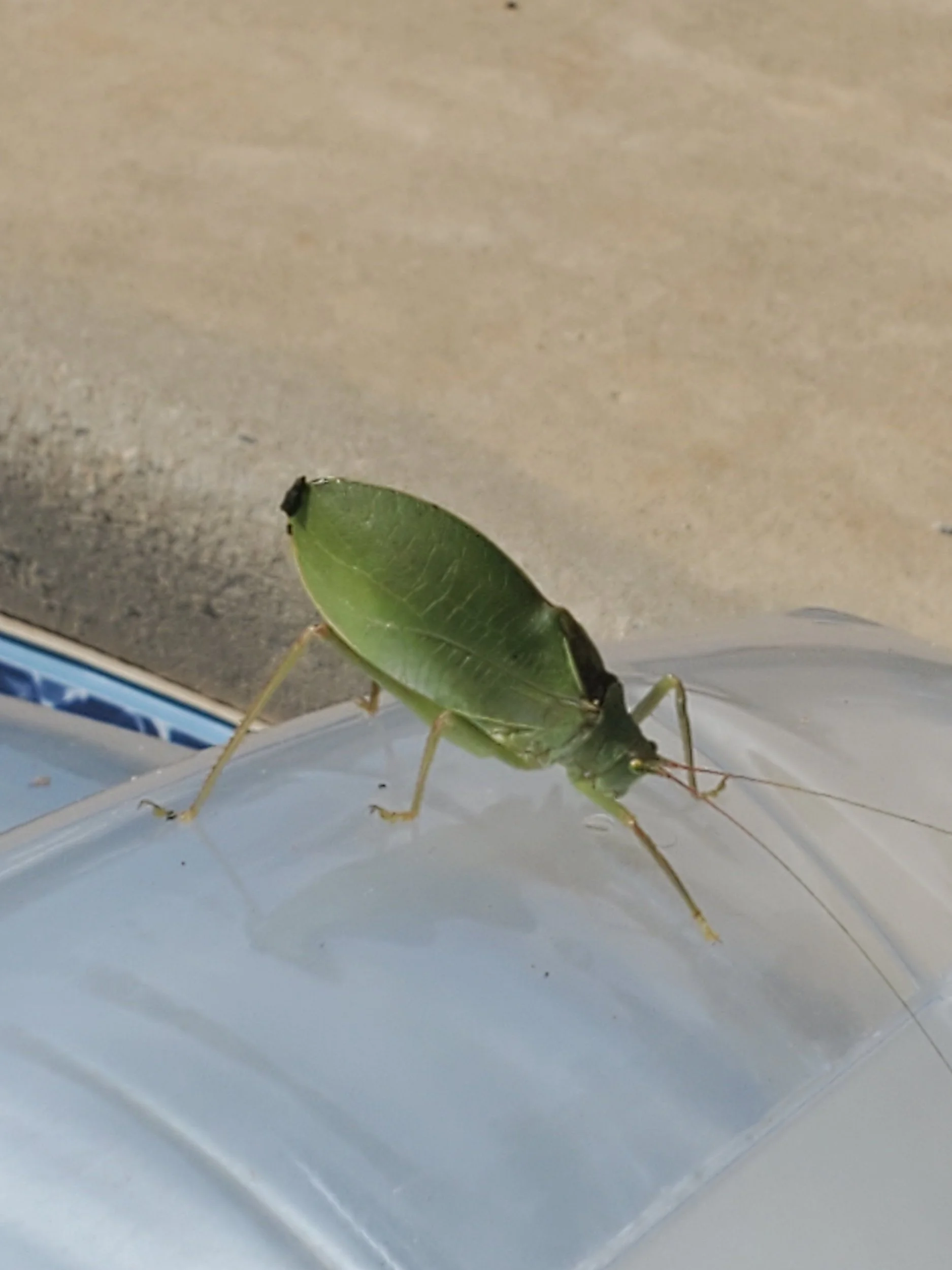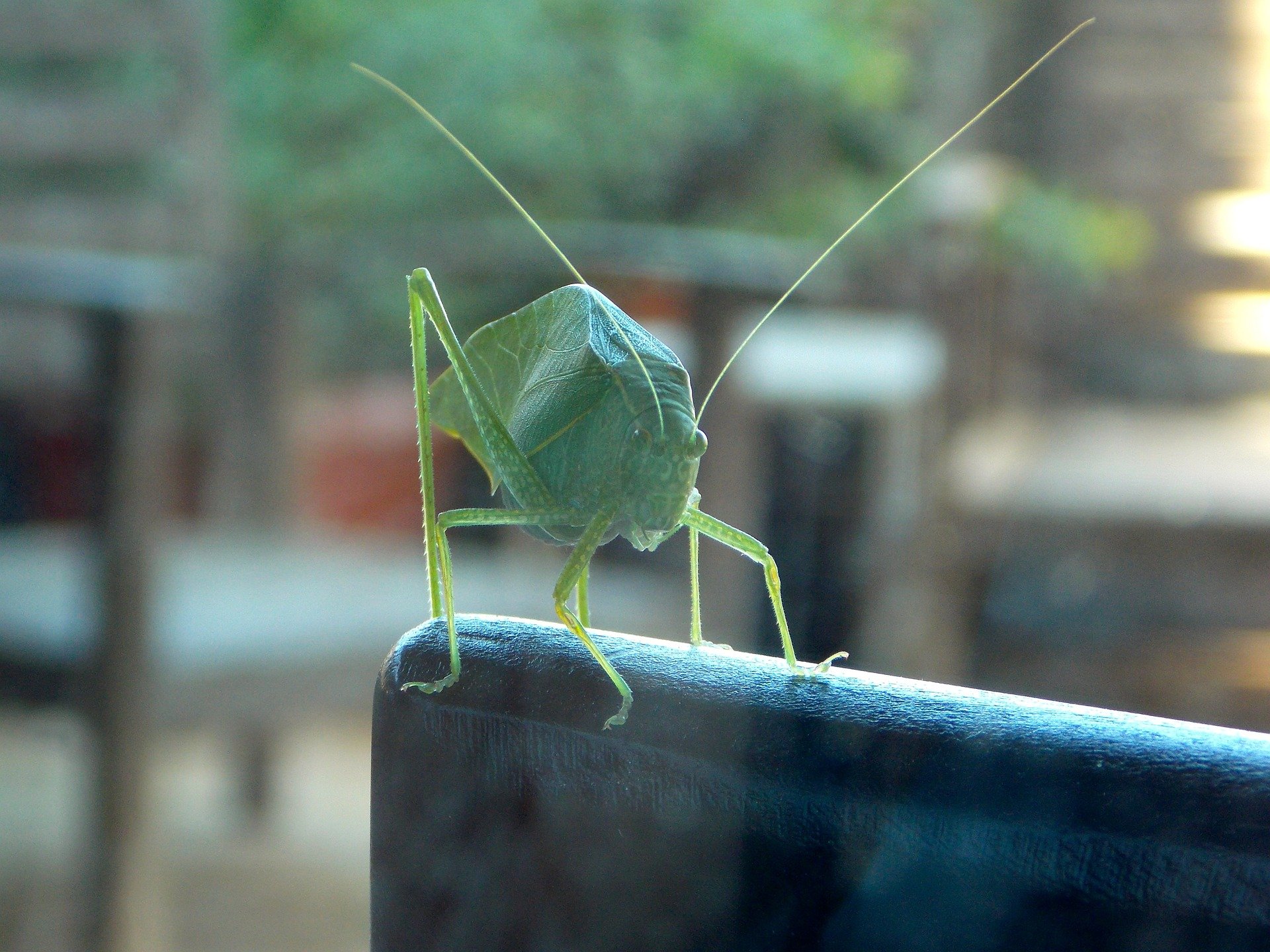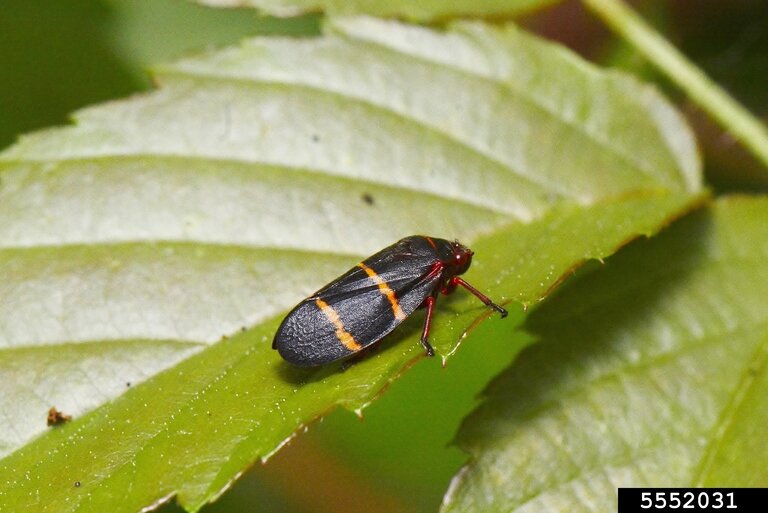When life hands you lemons, you make lemonade. As a result of the lightning hit last week that destroyed our internet and computer components and the power outage that shut down my small town for several hours on the hottest day (so far) of 2023, I went outdoors to seek a cooler, peaceful spot. Otherwise, I might never have spotted the three cool insects shown below.
Eastern Eyed Click Beetle (Alaus oculatus) is also known as the Eyed Elator. In my personal vocabulary, it will be known as a Big Eyed Bug. The large wing spots are thought to serve as a device to scare away predators. If they land on their backs, through wind or some other cause, click beetles have the unique ability to contract themselves and launch into the air so that they can land right-side-up. This explosive contraction causes a popping or clicking sound, which leads to the common name. Despite their scary appearance, these beetles are harmless. The larvae, known as wireworms, are skinny golden worms with brown or black heads. They live in decaying wood or stumps and like to dine on other bugs. This is unique since most wireworms dine on vegetative crops and are considered a nuisance.
Eastern Eyed Click Beetle
The Tabanus atratus pictured below was identified by BugGuide.net as Monster Black Fly or Giant Black Fly. The word atratus means “clothed in black.” I included a photo with my finger so that you could detect the scale of this giant thing. While they normally feed on plant nectar, breeding female horseflies need a blood meal. They make life miserable for horses and cattle. It is rare for them to bite a human, but if you are unfortunate enough to be the target of an attack, the University of Milwaukee describes the experience as “memorable.” This cannot be good. Rather than sucking blood up through a mouth-tube like a mosquito, the Giant Black Horsefly uses razor-like blades to slice skin open and then laps the blood up like a vampire kitten (my description, not UW-M). It is best to avoid these.
Southeastern True Katydid, Pterophylla camellifolia, is an attractive green insect with long antenna and a quizzical look. They live in treetops and make their LOUD calls at night to attract mates. Most calls are made by males, but a few females join in the cacophony. When it is cool enough to sleep with windows open, I note that their loud calls end at some point during the night. I don’t know if this is due to changes in temperature, exhaustion from all that caterwauling, or success in finding a mate. True katydids are weak flyers. If they get blown out of the treetops, they are likely to walk back up the tree rather than flying. They must have some serious sticky feet, because one recently rode on my car’s exterior mirror for more than two miles at normal traffic speed. He was still hanging on when I parked.

